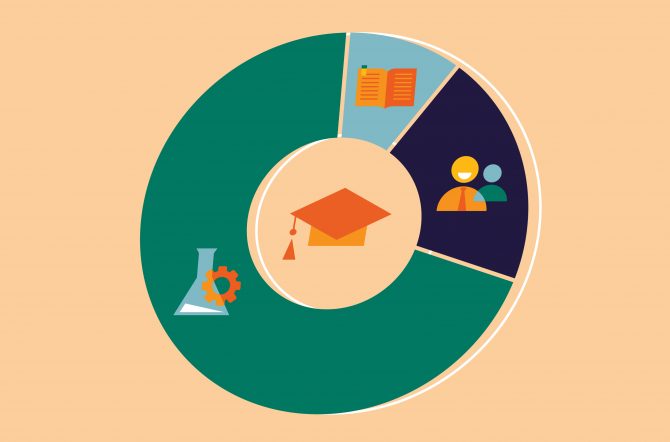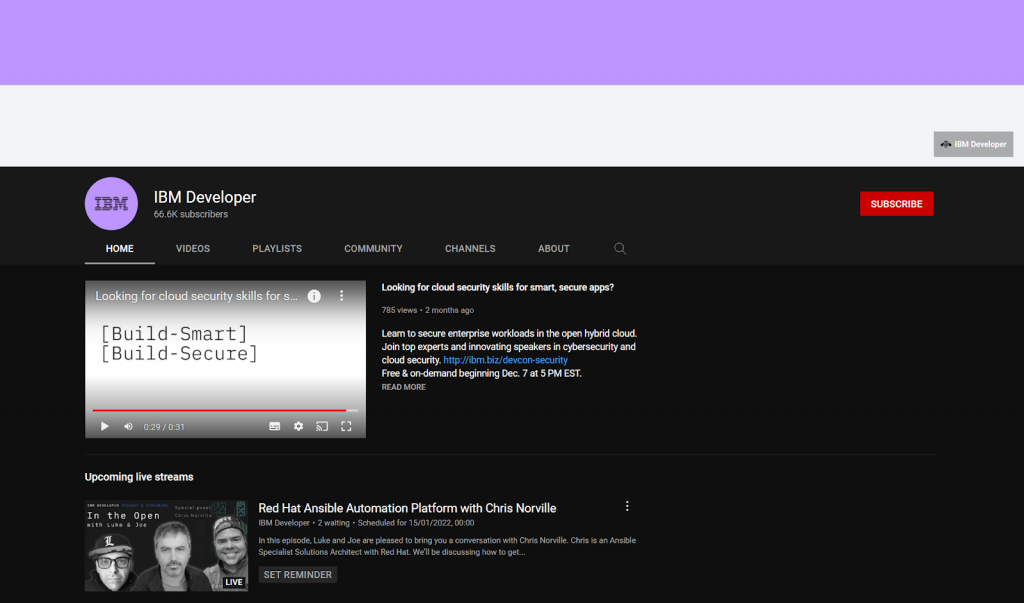During the mid-1990s, three researchers from the Center for Creative Leadership studied the learning philosophy of almost 200 executives. As a result, they developed the formula of the 70:20:10 learning model that notably changes corporate learning practices. Let’s figure out how you can maximize the effectiveness of training programs with this key framework.
The Idea Behind 70:20:10 Learning Model
Back to the survey result, researchers found out that learners obtain their knowledge from three primary training types, including:
- 70% from experiential learning, such as challenging assignments or hand-on experience;
- 20% from social learning or peer-to-peer interactions;
- 10% from formal learning with training sessions and coursework
In other words, 90% of learning occurs outside a traditional classroom, which comprises informal learning.
The 70:20:10 model for learning has become popular as an ideal balance of learning sources for employee training. The rule has stood the test of time since then.

Some recent research shows that the ratio may not be fixed. However the main idea remains that it’s more effective to implement a blended learning rather than a one-method program.
Advantages of the 70:20:10 Learning Model
Flexibility
As mentioned above, the 70:20:10 model of learning is not likely a set formula. It’s such a flexible guideline that businesses can adopt it differently to meet their needs. One can use the rule to enhance employee performance with specific outcomes. At the same time, others can utilize it as a strategy for continuous professional development.

Faster performance
Many 70:20:10 learning model examples in employee training have proven this method’s effectiveness in the corporate learning environment. Instead of waiting for a training session, employees can ask colleagues for advice and solve the problem right away. This helps them to process the work faster. Or newcomers can catch up on their work with a mentor with practice-based experience.
Higher employee engagement
The 70:20:10 model of learning covers a large proportion of informal learning. That means both managers and colleagues get involved in training activities. It leverages employee engagement and, consequently, improves the employee retention rate.

Preparation Checklist to Power your Digital Transformation
Wondering if you miss anything in your preparation to digitize your training? This is just what you need.
How to Apply 70:20:10 Learning Strategy in Training
Imagine that your training program is like a pie. Let’s consider each ingredient of this pie in detail based on the 70:20:10 model for learning.
70% of Experiential Learning
Another study by Edgar Dale also states that people can retain what they personally experience by up to 90%. So, the experiential learning part suggests you need to give it a try if you want to learn something.
What if you can not learn in real-life situations for any reason? Some following technologies will help you enhance your learning and develop the skills.

- Virtual Reality (VR)/ Augmented Reality (AR)
Virtual Reality (VR) offers an environment that simulates learners’ real-life situations, which brings a fully-immersive experience. It’s an excellent solution for employee training in defense, manufacturing, or any other industry with dangerous workplaces. For instance, a fire rescue department in the USA has trained firefighters via a virtual emergency using VR.
Or KFC trains their future chefs using virtual training in the form of an escape game. They trap employees in the virtual kitchen until they can serve the fried chicken in the right way. KFC’s trainees can practice their skills until they’re confident to start the job.
While VR only enhances the virtual environment, Augmented Reality can enhance both the virtual and real world. That’s why AR is a promising technology for medical-related education. To give you an idea, medical students now can practice surgery on virtual patients for the anatomy class using AR.
- Interactive video
Interactive video gives learners a scenario-based practice. They need to make a decision of what happens next in a given situation that relates to their jobs. Take the video below for examples. Learners can experience how to apply the skills in realistic situations while not causing any negative impact on the business.
Recommend reading:
20% of Social Learning
Social learning, or peer-to-peer learning, is on the rise in the workplace in many different forms. Any time you ask questions, talk to other colleagues or share knowledge, that means you are learning. Social learning encourages a collaborative learning environment that drives the effectiveness of L&D strategy and business productivity in general.
In the modern world, the practice of social learning can happen in person as well as through online interactions.

- Social media
Social media is becoming a dominating method of communication and connection for both personal and professional purposes. That’s where we can find and share interesting and helpful knowledge with others.
For example, the most popular social media platform, Facebook, allows L&D specialists to
- Create discussion groups for specific shared knowledge or information
- Create a closed or private group to provide course assignments and reference materials. Employees also can share and discuss their ongoing projects with colleagues.
- Carry out feedback surveys on your training programs.
Or you can also use Youtube to publish video training content, as IBM does. They upload all video learning materials and tutorial libraries for employees to watch any time they need.
- Learner-generated content
The dare-to-share project from British Telecom is among outstanding examples for social employee learning using learner-generated content. Whenever employees have to encounter issues at work, they make short videos on smartphones showing how they solve the problem. Then they can share the content via a company website or forum to promote their knowledge.
10% of Formal Learning
Only making up one-tenth of the formula, formal training is still the starting point. It’s the knowledge foundation to build up informal learning. On the other hand, formal learning also acts as a booster for knowledge from interpersonal communication and on-the-job experience. Some popular formal learning types recently include:
- eLearning
eLearning, or online learning, brings more benefits to organizations compared to traditional classrooms or instructor-led training. In particular, it saves more training budget while boosting employee morale more efficiently. eLearning also allows you to personalize the training process to optimize an individual’s learning outcomes.
In most cases, businesses organize and deliver eLearning courses on a learning management system (LMS). You can create eLearning courses in various formats, add learners to the courses, and keep track of their learning process. The system will help you automatically measure the learners’ results and training effectiveness.
Take a look at:
- Blended Learning
Blended learning combines both traditional training methods and digital solutions. Some pieces of training on key efficiency indicators, such as for manufacturing, require employees to go through face-to-face classes. In contrast, some training parts on soft skills can be completed via both online and in-class sessions.
- Webinars
Webinars can be a great way to encourage your virtual employees to join the training. Many platforms to host webinars now support all activity formats such as presentations, live video, interactive whiteboards, note-taking, and real-time quizzes. They also allow recording of the live sessions for learners to join after or revisit at any time.
To Sum Up
The 70:20:10 learning model has proven that effective learning needs to cover more than just traditional classrooms. And keep in mind that this is about the balance among training types, not just the exact ratio. It’s modern technology that allows the 70:20:10 learning model to be more flexible in practice. So, take time to find the ideal balance for your training program to maximize the training effectiveness.
Read more





![Top 10 Corporate Animated Video Companies in Canada [2025 Review] 9 Corporate Animated Video Companies in Canada](https://flearningstudio.com/wp-content/uploads/2025/11/corporate-animated-video-canada-420x370.jpg)
